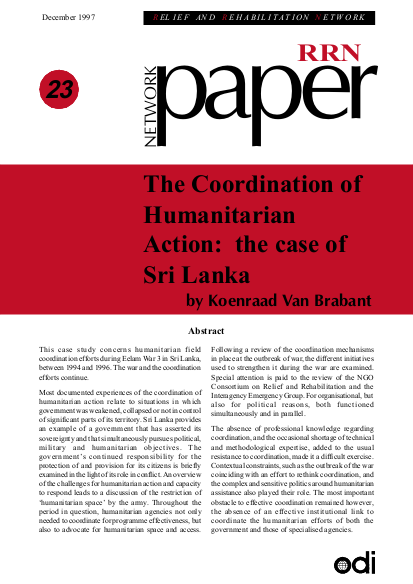The Case of Sri Lanka

This case study concerns humanitarian field
coordination efforts during Eelam War 3 in Sri Lanka,
between 1994 and 1996. The war and the coordination
efforts continue.
Most documented experiences of the coordination of
humanitarian action relate to situations in which
government was weakened, collapsed or not in control
of significant parts of its territory. Sri Lanka provides
an example of a government that has asserted its
sovereignty and that simultaneously pursues political,
military and humanitarian objectives. The
government’s continued responsibility for the
protection of and provision for its citizens is briefly
examined in the light of its role in conflict. An overview
of the challenges for humanitarian action and capacity
to respond leads to a discussion of the restriction of
‘humanitarian space’ by the army. Throughout the
period in question, humanitarian agencies not only
needed to coordinate for programme effectiveness, but
also to advocate for humanitarian space and access.
Following a review of the coordination mechanisms
in place at the outbreak of war, the different initiatives
used to strengthen it during the war are examined.
Special attention is paid to the review of the NGO
Consortium on Relief and Rehabilitation and the
Interagency Emergency Group. For organisational, but
also for political reasons, both functioned
simultaneously and in parallel.